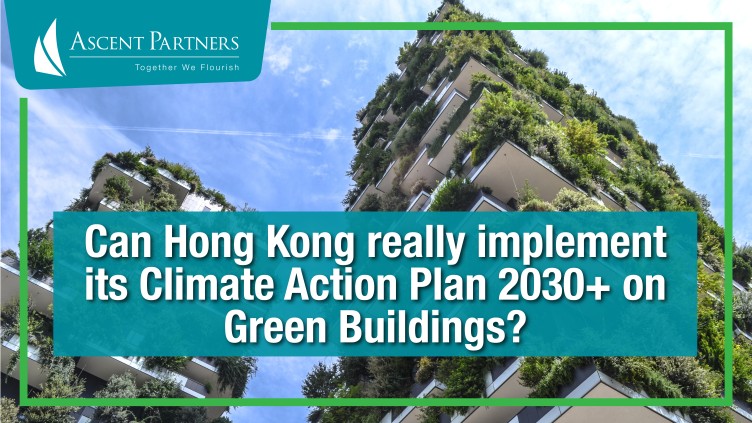
Can Hong Kong really implement its Climate Action Plan 2030+ with Green Buildings?
‘Green building’ is an emerging hot topic on the green agenda but does this green dream truly exist, or is it yet another instance of greenwashing, distracting us from our climate reality in Hong Kong?
Hong Kong is one of the most densely populated cities on the planet, with over 42,000 private and 8,000 government buildings all across the territory. Buildings are responsible for consuming a large portion of energy, electricity, water and materials consumption, claiming as much as 90% of the total electricity consumption as well as about 60% of the total carbon dioxide emissions each year.
Currently, between 300 and 500 new buildings are built per annum, meaning that between 60% and 80% of buildings that are standing in 2050 exist already. This is why addressing the total emissions of both new and existing buildings is therefore critical in the process of decarbonising the building sector.
To address these concerns, the Hong Kong government has introduced a set of strict green certification standards designed by the Hong Kong Green Building Council (HKGBC) called BEAM Plus.
To attain a BEAM Plus certification, building developers must meet a comprehensive set of performance criteria for various sustainability issues ranging from planning and construction to the operation and maintenance of the building.
Using the United States’ own set of ratings systems for green buildings known as Leadership in Energy and Environmental Design (LEED), it is estimated that 710,850MWh of electricity is being saved each year – roughly the average annual electricity consumption of 146,000 Hong Kong households – and 15.7 billion litres of fresh and seawater consumption is being avoided annually in Hong Kong.
However, whilst the standards are stringent prior to a building’s construction, Hong Kong has yet to develop follow-up requirements for businesses and industry sectors. There are no mandatory follow-up requirements for businesses or even by sectors to achieve this overall goal.
One of the key stumbling blocks to Hong Kong developers building more sustainable buildings is the cost. A 2017 study conducted by the University of Hong Kong indicated that, when compared with conventional building projects, there is a 34.06% increase in capital cost in green building projects on average, and the values of green building projects are higher in terms of price, rental cost and premium in market valuation (by 6-8%).
So ultimately, it is the government’s responsibility to create a systemic structure in which sustainability standards are consistently upheld post-development. Leading by example, the government can exert a large influence on the building sector, which, in turn, could make green buildings in Hong Kong a highly desired form of investment that will be beneficial to the city’s sustainable future in the long-run
